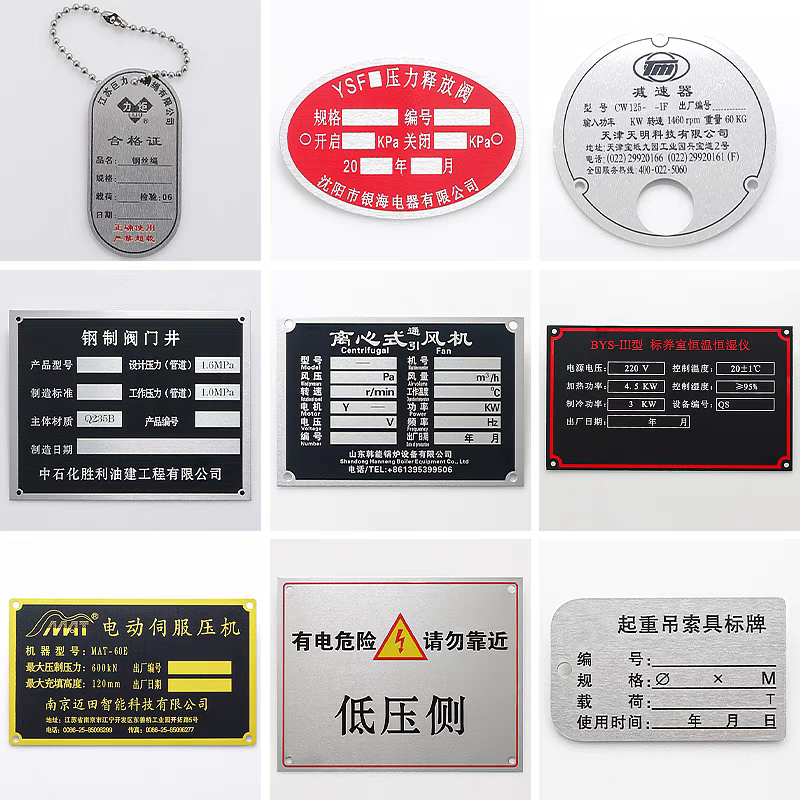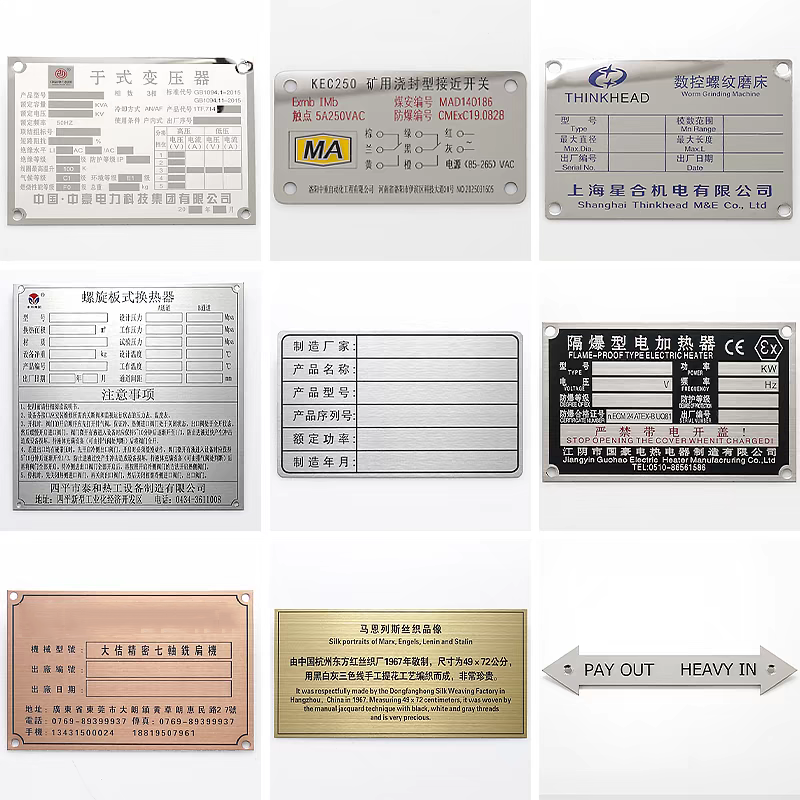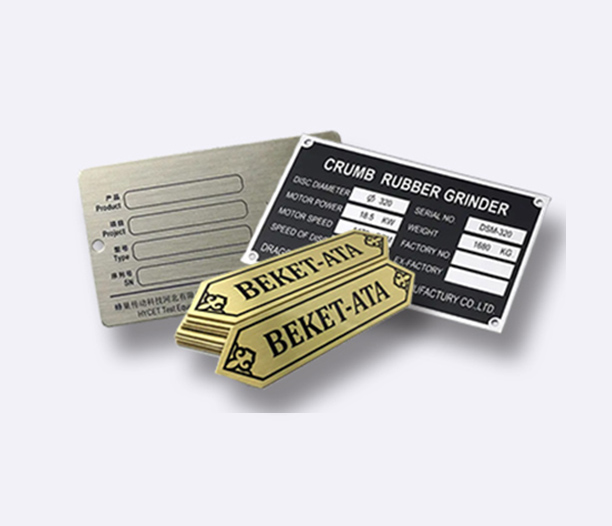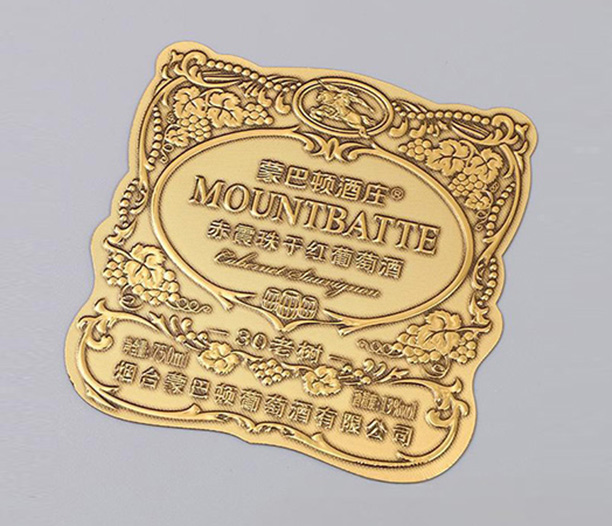In today's fast-paced industrial environments, efficient asset management is crucial for productivity and safety. One often-overlooked tool that plays a vital role in this process is metal tags for equipment. These durable identifiers are used across various sectors, including manufacturing, construction, and logistics, to label machinery, tools, and assets. Metal tags for equipment offer numerous advantages over other labeling methods, such as plastic or paper tags, due to their resilience and versatility. In this article, we will delve into five key aspects of metal tags for equipment, highlighting why they are indispensable for modern operations. From enhancing durability to ensuring compliance, we'll explore how these tags can transform your asset management strategy. By the end, you'll have a comprehensive understanding of why investing in high-quality metal tags for equipment is a smart decision for any organization.

Durability and Longevity of Metal Tags for Equipment
When it comes to labeling equipment in harsh environments, durability is paramount. Metal tags for equipment are typically made from materials like stainless steel, aluminum, or brass, which offer exceptional resistance to wear and tear. Unlike plastic or paper tags that can fade, crack, or peel over time, metal tags withstand extreme conditions, including high temperatures, moisture, chemicals, and physical impact. For instance, in industrial settings where equipment is exposed to oils, solvents, or outdoor elements, metal tags for equipment maintain their integrity, ensuring that identification remains clear and legible for years. This longevity reduces the need for frequent replacements, saving time and costs. Additionally, metal tags can be coated or treated with protective layers, such as anodizing or powder coating, to enhance their resistance to corrosion and abrasion. This makes them ideal for use in sectors like oil and gas, mining, and marine applications, where equipment faces constant stress. By choosing metal tags for equipment, businesses can rely on a labeling solution that endures, minimizing downtime and maintaining operational efficiency.
Identification and Tracking Capabilities
Effective asset management hinges on accurate identification and tracking, and metal tags for equipment excel in this area. These tags can be customized with essential information, such as serial numbers, barcodes, QR codes, or RFID chips, enabling seamless integration into inventory and maintenance systems. For example, in a manufacturing plant, metal tags for equipment allow workers to quickly scan and retrieve data on machinery history, maintenance schedules, or safety instructions. This streamlines processes like audits, repairs, and compliance checks, reducing errors and improving productivity. Moreover, the permanent nature of metal tags ensures that critical details don't get lost or altered, which is common with temporary labels. In logistics and warehousing, using metal tags for equipment helps track assets across multiple locations, preventing loss and optimizing resource allocation. The ability to embed tracking technologies directly into metal tags for equipment also supports real-time monitoring, which is essential for industries embracing IoT and smart factory initiatives. Overall, this aspect underscores how metal tags for equipment enhance visibility and control over assets.
Safety and Compliance Benefits
Safety is a top priority in any industrial operation, and metal tags for equipment play a critical role in promoting a secure work environment. These tags are often used to display safety warnings, hazard symbols, or compliance information, such as OSHA standards or ISO certifications. For instance, in construction sites, metal tags for equipment might indicate load limits, electrical hazards, or operational guidelines, helping prevent accidents and injuries. The robust nature of metal ensures that these safety messages remain intact even in demanding conditions, unlike flimsier alternatives that could detach or become illegible. Furthermore, regulatory bodies often require permanent identification for certain types of equipment, and metal tags for equipment meet these mandates effectively. In industries like healthcare or aerospace, where precision and compliance are non-negotiable, using metal tags for equipment ensures that assets are properly labeled according to industry-specific regulations. This not only mitigates legal risks but also fosters a culture of safety and accountability among employees. By integrating metal tags for equipment into safety protocols, organizations can reduce incidents and demonstrate a commitment to compliance.
Customization Options for Metal Tags
One of the standout features of metal tags for equipment is their high degree of customization. Businesses can tailor these tags to meet specific needs, including size, shape, color, and engraving techniques. Common methods for adding information include etching, stamping, or laser marking, which produce sharp, permanent text and graphics that won't smudge or fade. For example, a company might order metal tags for equipment with its logo, unique asset numbers, or multi-language instructions to align with brand identity or international operations. Colors can be applied through processes like enamel filling or digital printing, making the tags visually distinctive for quick recognition. This flexibility extends to the choice of materials—aluminum tags are lightweight and cost-effective, while stainless steel offers superior strength for heavy-duty applications. Custom metal tags for equipment can also be designed with specific attachment methods, such as adhesive backing, holes for rivets, or welding, ensuring they stay securely in place. This level of personalization allows organizations to optimize their labeling systems for efficiency and aesthetics, making metal tags for equipment a versatile solution across diverse industries.

Installation and Maintenance Tips
Proper installation and maintenance are key to maximizing the benefits of metal tags for equipment. Installing these tags correctly ensures they remain affixed and functional throughout the equipment's lifecycle. Common installation methods include using screws, rivets, adhesives, or welding, depending on the surface and environment. For instance, in high-vibration areas, welding or riveting metal tags for equipment provides a secure attachment that won't loosen over time. It's important to clean the surface thoroughly before installation to prevent debris from interfering with adhesion. When it comes to maintenance, metal tags for equipment generally require minimal upkeep due to their durability. However, periodic inspections are recommended to check for any signs of damage or wear, such as corrosion or fading, especially in extreme conditions. Cleaning with mild solvents and soft cloths can help maintain readability without damaging the tag. Additionally, if information needs updating, metal tags for equipment can often be re-engraved or replaced without much hassle. By following best practices for installation and maintenance, businesses can ensure that their metal tags for equipment continue to perform reliably, supporting long-term asset management goals.
Cost-Effectiveness and ROI
Investing in metal tags for equipment may seem like an upfront expense, but it offers significant cost savings and return on investment (ROI) in the long run. Compared to disposable labels, metal tags for equipment have a longer lifespan, reducing the frequency and costs associated with replacements. For example, in a large facility with hundreds of assets, switching to metal tags for equipment can cut down on annual labeling budgets by eliminating the need for recurrent purchases. Moreover, the improved tracking and safety features lead to fewer operational errors, equipment losses, and accidents, which can result in substantial financial savings. Studies show that effective asset management with durable identifiers like metal tags for equipment can boost productivity by up to 20%, as employees spend less time searching for or misidentifying tools. The durability also means less waste, aligning with sustainability goals. When calculating ROI, consider factors like reduced downtime, enhanced compliance, and better resource utilization. In essence, metal tags for equipment are a wise investment that pays off through improved efficiency and lower total cost of ownership.
Environmental Resistance and Applications
Metal tags for equipment are designed to perform reliably in a wide range of environmental conditions, making them suitable for diverse applications. Whether in indoor settings or harsh outdoor environments, these tags resist factors like UV radiation, temperature fluctuations, and chemical exposure. For instance, in the agricultural sector, metal tags for equipment used on farming machinery can withstand dirt, moisture, and sunlight without degrading. In contrast, plastic tags might become brittle or discolored. Similarly, in marine or coastal areas, stainless steel metal tags for equipment offer excellent corrosion resistance against saltwater and humidity. This environmental resilience expands their use to industries such as energy, where equipment is often exposed to extreme weather, or food processing, where tags must endure frequent washing with harsh cleaners. The versatility of metal tags for equipment also allows for application-specific designs, such as tamper-evident features for security or high-visibility colors for safety. By understanding the environmental demands of your operations, you can select the right type of metal tags for equipment to ensure lasting performance and reliability.
FAQs About Metal Tags for Equipment
Q1: What materials are commonly used for metal tags for equipment?
A1: Metal tags for equipment are typically made from materials like stainless steel, aluminum, brass, or zinc. Stainless steel is popular for its corrosion resistance and strength, making it ideal for harsh environments. Aluminum is lightweight and cost-effective, often used for indoor applications, while brass offers a decorative finish and good durability. The choice depends on factors like budget, environment, and specific functional requirements.
Q2: How do metal tags for equipment compare to plastic tags in terms of durability?
A2: Metal tags for equipment generally outperform plastic tags in durability. They are resistant to heat, chemicals, and physical impact, whereas plastic tags can melt, fade, or break easily. Metal tags maintain legibility longer, reducing replacement needs and ensuring reliable identification in demanding conditions like industrial or outdoor settings.
Q3: Can metal tags for equipment be customized with barcodes or QR codes?
A3: Yes, metal tags for equipment can be easily customized with barcodes, QR codes, or other machine-readable features using techniques like laser engraving or etching. This allows for efficient asset tracking and integration with digital management systems, enhancing inventory control and maintenance processes.
Q4: What are the best practices for installing metal tags for equipment?
A4: For secure installation, clean the surface thoroughly and choose an appropriate method based on the environment—such as rivets or welding for high-vibration areas, or strong adhesives for smooth surfaces. Ensure the tag is placed in a visible, accessible spot and avoid bending or damaging it during installation to maintain longevity.
Q5: Are metal tags for equipment environmentally friendly?
A5: Metal tags for equipment are often more sustainable than disposable alternatives because they are durable and reusable, reducing waste. Many are made from recyclable materials, and their long lifespan minimizes the environmental impact associated with frequent replacements. However, it's important to consider the production processes and choose suppliers who follow eco-friendly practices.
In conclusion, metal tags for equipment are a versatile and reliable solution for asset management across various industries. By focusing on durability, identification, safety, customization, and installation, businesses can leverage these tags to improve efficiency and reduce costs. If you're considering upgrading your labeling system, metal tags for equipment offer a proven way to enhance operational excellence.






